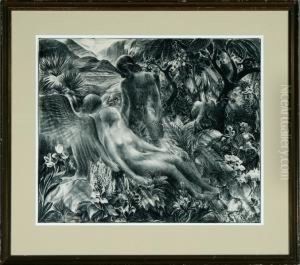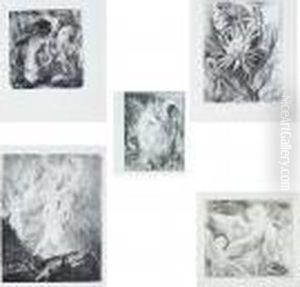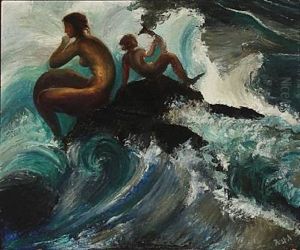Just Andersen Paintings
Just Andersen was a Danish sculptor and silversmith, born in the town of Godhavn in Greenland on February 13, 1884. His work is particularly known for its Art Deco style and the use of a variety of materials, including metals, ceramics, and glass. Andersen's interest in art was evident from an early age, and he trained as a sculptor at the Royal Danish Academy of Fine Arts in Copenhagen.
After completing his education, Andersen began to establish himself as a skilled artist in the early 20th century. His designs often drew on historical and mythological themes, with a particular focus on form and material. He was adept at metalwork and developed a unique alloy named 'Disko metal,' which was inspired by the iron found in the Disko Bay area of Greenland where he was born. This metal was cheaper than silver and was used in a range of decorative objects, including vases, bowls, and candlesticks.
Andersen's career was marked by a commitment to both artistic innovation and commercial success. In 1918, he founded Just Andersen Pewter (Just Andersen Tin), which produced a wide array of items, from household objects to more artistic pieces. His work was not confined to Denmark; he enjoyed international recognition and his pieces were exported across Europe and North America.
Tragically, Just Andersen's life and career were cut short by the events of World War II. He was arrested by the German occupying forces in Denmark and died in a prison camp on December 11, 1943. Despite his untimely death, Andersen's legacy endures through his numerous designs and the continued operation of the company he founded, which after his death was run by his widow Alba Andersen until the 1970s. Today, Just Andersen's work is considered emblematic of Danish design in the interwar period and is still sought after by collectors.


